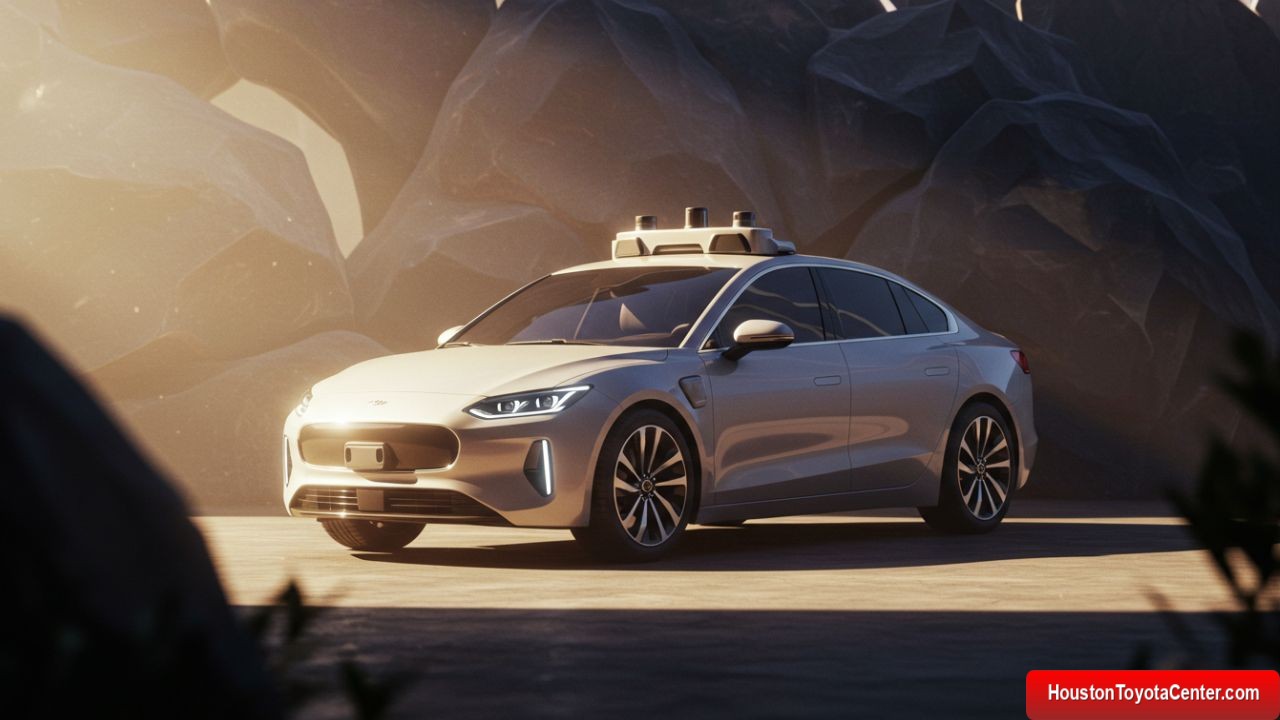The promise of self-driving cars has captivated the public imagination for over a decade. Tech giants and automotive companies alike have painted a utopian vision: highways free of traffic jams, zero fatalities, and commuters lounging in their vehicles while AI chauffeurs them to their destinations. But behind the glossy marketing campaigns and carefully curated demo videos lies a darker reality—one riddled with ethical quandaries, technical failures, and corporate secrecy. This article pulls back the curtain to expose the unsettling truths about autonomous vehicles (AVs) that Silicon Valley doesn’t want you to know.
The Illusion of Perfection: How Self-Driving Tech Really Works
At the heart of every self-driving car is a complex web of sensors, algorithms, and machine learning models. Companies like Tesla, Waymo, and Cruise tout their vehicles’ ability to “see” the world using lidar, radar, cameras, and ultrasonic sensors. But how reliable are these systems in real-world conditions?
Sensor Limitations: A House of Cards
While lidar (Light Detection and Ranging) creates precise 3D maps of a car’s surroundings, it struggles in heavy rain, fog, or snow. Radar, which detects objects via radio waves, is weather-resistant but lacks the resolution to identify small obstacles like debris or animals. Cameras, though critical for reading traffic signs, are easily blinded by glare or low light.
| Sensor Type | Strengths | Weaknesses |
|---|---|---|
| Lidar | High-resolution 3D mapping | Fails in poor weather |
| Radar | Works in all weather | Low detail, misses small objects |
| Camera | Reads signs, detects colors | Glare, darkness, lens fogging |
| Ultrasonic | Short-range detection | Limited to parking speeds |
Even when sensors do function perfectly, the AI interpreting the data is far from infallible. Machine learning models are trained on millions of driving scenarios, but “edge cases”—rare or unpredictable events—remain a persistent blind spot. For instance, how does an AV react to a pedestrian wearing unusual clothing, or a truck spilled its load of marbles onto the highway?
FREE: Quickly identify and understand problems with your vehicle 🚘
CLICK HEREThe Hidden Dangers: When Autonomy Goes Wrong
1. The Myth of “Safer Than Humans”
Tech companies often claim that self-driving cars will reduce the 1.35 million annual global road fatalities by eliminating human error. But the data tells a murkier story.
In 2023, the National Highway Traffic Safety Administration (NHTSA) reported nearly 400 crashes involving AVs in the U.S. over a 10-month period, including 6 fatalities and 5 serious injuries. While this number pales in comparison to human-caused accidents, AVs have driven a fraction of the miles logged by traditional vehicles. Adjusted for mileage, some studies suggest AVs are 2-5x more likely to crash in urban environments.
| Metric | Human Drivers | Self-Driving Cars |
|---|---|---|
| Crashes per million miles | 4.1 | 9.7 (estimated) |
| Fatalities (2023) | ~42,000 (U.S.) | 6 (U.S.) |
| Common Causes | Distraction, speeding | Software glitches, sensor errors |
2. Cybersecurity: A Hacker’s Playground
Imagine a hacker disabling the brakes of thousands of cars simultaneously—or holding vehicles hostage for ransom. As AVs rely on cloud-based updates and vehicle-to-infrastructure (V2I) communication, they present a goldmine for cybercriminals. In 2022, researchers demonstrated they could trick Tesla’s Autopilot into swerving into oncoming traffic using projected road markings.
“The attack surface for autonomous vehicles is enormous. A single vulnerability could cascade into catastrophic failures.”
— Dr. Emily Tran, Cybersecurity Expert at MIT
3. Overreliance on Technology
Autonomy encourages complacency. Despite warnings, drivers routinely treat systems like Tesla’s Full Self-Driving (FSD) as fully autonomous, leading to horrifying incidents:
- A Tesla driver in Texas died in 2021 after his car failed to negotiate a curve, despite FSD being engaged.
- In San Francisco, a Cruise robotaxi paralyzed traffic for hours by malfunctioning and stalling in an intersection.
Ethical Dilemmas: Who Lives, Who Dies?
Self-driving cars force society to confront the trolley problem on a mass scale. When an accident is unavoidable, how should the AI prioritize lives? Should it protect its passengers at all costs, or swerve to save a group of schoolchildren, even if it means killing the driver?
Tech companies have remained eerily silent on this issue. Internal documents leaked from a major AV manufacturer revealed that engineers debated programming cars to prioritize younger lives over the elderly—a decision with chilling implications.
| Ethical Framework | Prioritization | Public Approval (Survey) |
|---|---|---|
| Utilitarian | Minimize total casualties | 34% |
| Passenger-First | Protect driver at all costs | 29% |
| Random Choice | No bias; let randomness decide | 22% |
| Age-Based | Save youngest victims first | 15% |
Worse, these decisions are being made without public input. There’s no transparency about how AVs are programmed to behave in life-or-death scenarios—a lack of accountability that ethicists call “algorithmic tyranny.”
Regulatory Black Holes: Who’s Watching the AI?
The race to dominate the AV market has outpaced regulators. In the U.S., the NHTSA relies on voluntary safety reports from companies, creating a system ripe for abuse. Meanwhile, loopholes allow firms to test prototypes on public roads with minimal oversight.
Case in Point: Uber’s 2018 Arizona Crash
- A self-driving Uber struck and killed Elaine Herzberg, a pedestrian crossing the street.
- Investigations revealed the car’s lidar detected her but dismissed her as a “false positive.”
- Uber’s safety driver was streaming The Voice on her phone.
- Result: Zero criminal charges. Uber paid a $10 million settlement and resumed testing within months.
Europe and Asia are scrambling to catch up, but fragmented laws create a global patchwork of standards. Without unified regulations, AV companies can exploit lax regions as testing grounds.
The Profit Motive: Tech’s Dirty Secret
Beneath the altruistic rhetoric, AV development is driven by trillions in potential revenue. Autonomous ride-hailing services alone could generate $8 trillion annually by 2030 (Morgan Stanley). This profit motive incentivizes cutting corners:
- Rushing software updates without adequate testing.
- Collecting user data to refine AI models—often without explicit consent.
- Lobbying governments to weaken safety standards.
Internal emails from a leading AV firm, leaked in 2023, included this chilling directive: “Delay reporting minor collisions to regulators until Q4. We need to hit investor milestones.”
Case Studies: When Innovation Meets Tragedy
1. Tesla’s Autopilot: A Pattern of Denial
Despite its name, Tesla’s Autopilot is a Level 2 system (partial automation), requiring constant driver supervision. Yet Tesla’s marketing has long implied full autonomy, resulting in over 736 crashes and 17 fatalities linked to the feature since 2016. The company faces multiple lawsuits alleging fraudulent misrepresentation.
2. Waymo’s Pedestrian “Near-Misses”
In Phoenix, Waymo’s robotaxis have exhibited erratic behaviors, including:
- Stopping abruptly in moving traffic.
- Ignoring emergency vehicles.
- “Phantom braking” due to sensor ghosts.
Local police report over 22 interventions per month to rescue stalled vehicles.
Conclusion: A Roadmap for Accountability
The path to safe self-driving cars requires:
- Transparency: Mandate public disclosure of AI decision-making protocols.
- Strict Regulation: Global standards for testing, cybersecurity, and accident reporting.
- Ethical Oversight: Independent boards to audit algorithms for bias and safety.
- Public Education: Clear messaging about AV limitations to curb complacency.
Until then, the dream of self-driving cars remains a high-stakes experiment—with all of us as unwitting test subjects. The terrifying truth? Tech companies are gambling with lives to dominate the next frontier of transportation… and they’re hiding the dice.


Leave a Reply